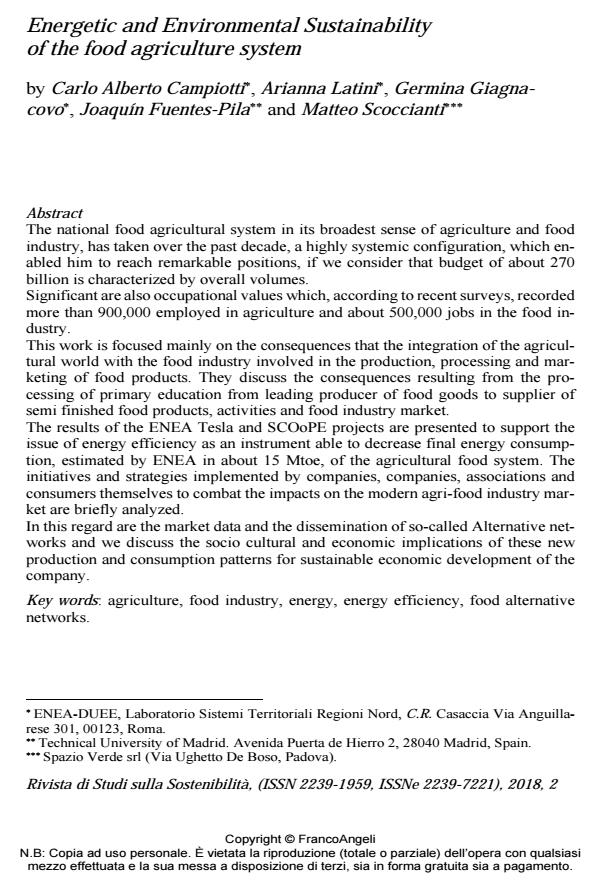Energetic and Environmental Sustainability of the food agriculture system
Journal title RIVISTA DI STUDI SULLA SOSTENIBILITA'
Author/s Carlo Alberto Campiotti, Arianna Latini, Germina Giagnacovo, Joaquín Fuentes-Pila, Matteo Scoccianti
Publishing Year 2019 Issue 2018/2
Language English Pages 15 P. 105-119 File size 214 KB
DOI 10.3280/RISS2018-002007
DOI is like a bar code for intellectual property: to have more infomation
click here
Below, you can see the article first page
If you want to buy this article in PDF format, you can do it, following the instructions to buy download credits

FrancoAngeli is member of Publishers International Linking Association, Inc (PILA), a not-for-profit association which run the CrossRef service enabling links to and from online scholarly content.
The national food agricultural system in its broadest sense of agriculture and food industry, has taken over the past decade, a highly systemic configuration, which enabled him to reach remarkable positions, if we consider that budget of about 270 billion is characterized by overall volumes. Significant are also occupational values which, according to recent surveys, rec-orded more than 900,000 employed in agriculture and about 500,000 jobs in the food industry. This work is focused mainly on the consequences that the integration of the agri-cultural world with the food industry involved in the production, processing and marketing of food products. They discuss the consequences resulting from the pro-cessing of primary education from leading producer of food goods to supplier of semi finished food products, activities and food industry market. The results of the ENEA Tesla and SCOoPE projects are presented to support the issue of energy efficiency as an instrument able to decrease final energy consump-tion, estimated by ENEA in about 15 Mtoe, of the agricultural food system. The initiatives and strategies implemented by companies, companies, associations and consumers themselves to combat the impacts on the modern agri-food industry market are briefly analyzed. In this regard are the market data and the dissemination of so-called Alternative networks and we discuss the socio cultural and economic implications of these new production and consumption patterns for sustainable economic development of the company.
Keywords: Agriculture, food industry, energy, energy efficiency, food alternative networks.
Carlo Alberto Campiotti, Arianna Latini, Germina Giagnacovo, Joaquín Fuentes-Pila, Matteo Scoccianti, Energetic and Environmental Sustainability of the food agriculture system in "RIVISTA DI STUDI SULLA SOSTENIBILITA'" 2/2018, pp 105-119, DOI: 10.3280/RISS2018-002007